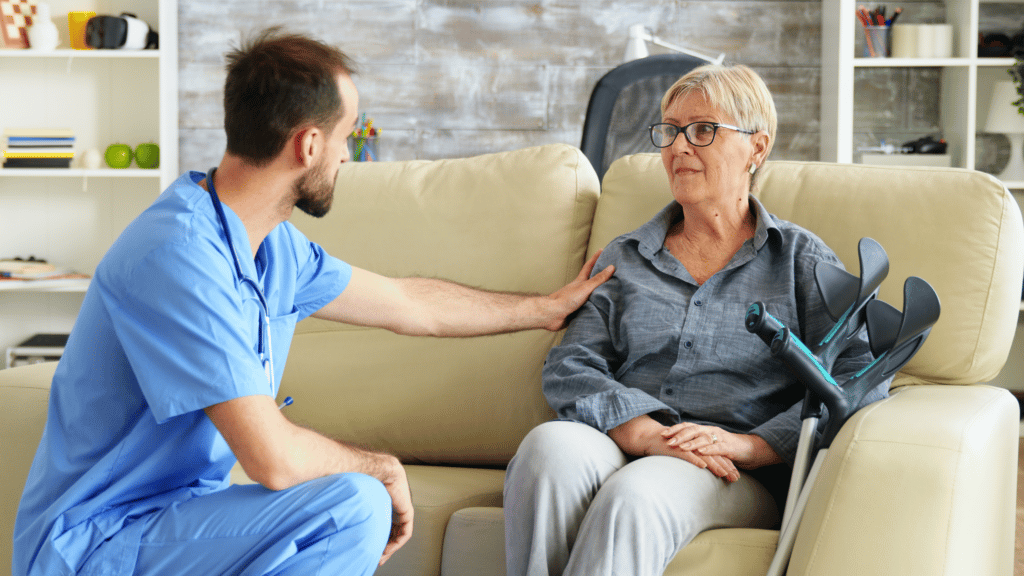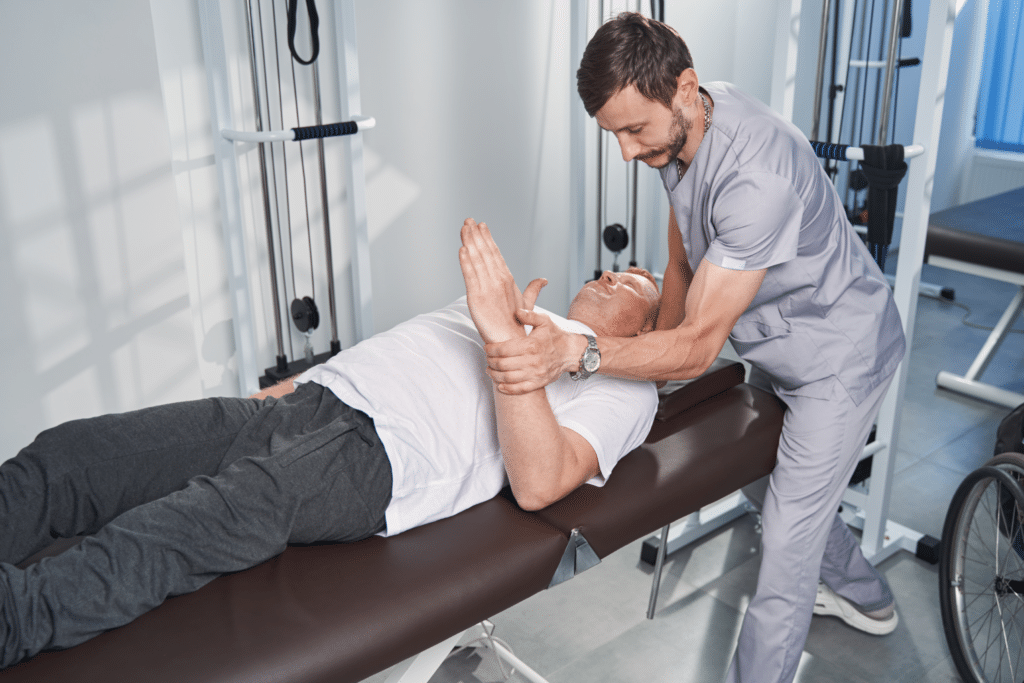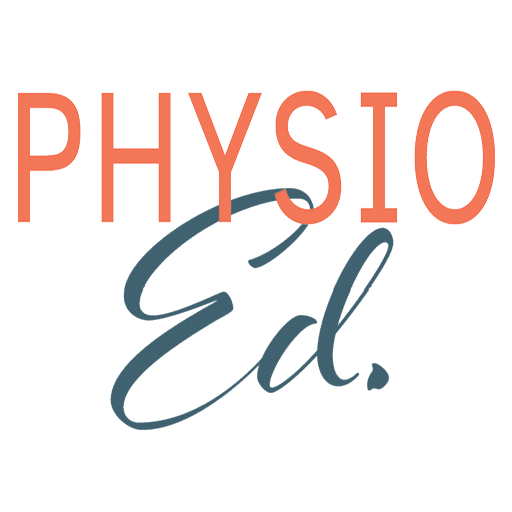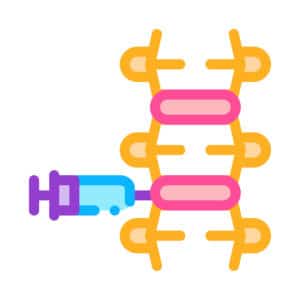“Is this pain, or am I just sore?”
Everyone confronts this question at some point in their lives. But what is the real difference between these sensations? Isn’t soreness just a type of pain?
In this article, we’ll explore the difference between soreness and pain to shed some light on what you can do to manage them both and when to seek help from a medical professional.
What is Pain, and How is Soreness Different?
Soreness and pain are both part of everyday life, but they can mean very different things. Let’s examine what soreness and pain are and what causes them.
Soreness
Sore muscles typically arise from pushing your muscles beyond their limits or intentionally or unintentionally using muscles you don’t use often.
For example, if you engage in strenuous exercise or stretching for the first time in months or years, you will probably experience muscle soreness afterward. This is called delayed-onset muscle soreness (or DOMS), and it tends to occur a day or so after exercise and can last for a couple of days.
Soreness can occur after you deliberately exercise a little too hard, but it can also occur from a sudden or abrupt use of body parts that aren’t used to working.
For example, minor muscle strain from a slip on a wet floor can feel similar to the soreness you might encounter from an intense workout. This is also true in situations where perhaps you have to lift an amount of weight to which you are unaccustomed.
DOMS is a natural part of your body’s recovery and rebuilding process. Sore muscles are usually a healthy and expected result of exercise. They will generally dissipate after a couple of days with sufficient rest, light stretching, and proper nutrition.
Physical therapy is not usually required for exercise-related muscular soreness unless the dull pain persists for more than five days, which may indicate that muscle fibers are damaged in a more serious way.
Additionally, visiting a doctor is not bad if you experience muscle soreness when you have not engaged in abnormal physical activity. Sensations of persistent “soreness” may be an indicator of another problem.
Pain
Pain is a little trickier because it is perceived differently by everyone in different contexts. For example, the pain that you feel when your muscles burn while exercising would be very alarming if it happened in the middle of dinner, but it is an expected result of doing bicep curls.
The most important differentiation is in identifying the difference between “good” pain (like muscle soreness, or ‘hurts-so-good’ massage pain) versus a sharp, shooting pain that you might encounter from a serious injury.
Pain is often point-specific (acute), especially in the case of broken bones, ligament, muscle, or tendon injuries. Chronic pain is pain that persists for weeks, months, or even years regardless of cause.
These types of pain typically feel more intense and sensitive to touch or movement, and can severely disrupt your physical activity patterns, both short and long-term.
For example, soreness from exercise will occasionally make walking uncomfortable, while pain from a joint injury will often prevent you from being able to walk at all, sometimes immediately after an injury occurs.
A physical therapist might work with a patient to manage pain while learning to overcome muscle weakness surrounding the injury. This would typically not be necessary for soreness.
Soreness vs Pain: How Can You Tell the Difference?
The intensity and persistence of pain can be an indicator that there is a medical problem that needs to be addressed. Pain is your body’s signal that something is wrong, and if pain persists, or increases in intensity, it is best to talk to your doctor.
In contrast, soreness is usually described as “tender,” or a burning feeling in your muscles that could begin to recede within a few hours or a few days, depending on the extent of the strain and stress on the muscle in question.
Soreness gradually lessens in intensity, while pain usually does not.
Circumstances may differ from person to person, but if the intensity and sharpness of a sensation are causing you to move differently to accommodate it, you are likely dealing with pain.
Common Causes of Pain
Pain can occur anywhere in your body and may arise from illness or injury. Determining which you are experiencing is often a matter of circumstance.
Injury

Again, intense or persistent pain is your body’s way of telling you something is wrong.
Physical discomfort is immediate and usually very intense after an injury like a broken bone or a muscle tear. Pain can result from virtually any body injury or trauma, large or small, to differing degrees.
Pain from an injury can be debilitating immediately, causing an inability to move parts of your body, or it can result in chronic, long-term pain, as anyone suffering from a back injury will attest.
Illness

Some illnesses cause pain, including kidney stones, pancreatitis, sore throat, headaches, toothaches from infection, an achy feeling caused by cold or flu, and heart and lung issues.
While some of these types of pain may resemble muscle soreness from exercise, they are typically longer-lasting and will only dissipate as the issue is resolved.
How and When to Treat Pain Without Medication

While medication can help alleviate pain, at least temporarily, it usually does not treat the underlying condition or cause.
In some cases, non-medication-based interventions can help to lessen or even alleviate pain without drugs.
Examples of non-medication pain treatments might include:
- Applying cold or heat to affected areas
- Physical and occupational therapy to assess and address causes through therapeutic exercise or manual care.
- Relaxation or stretching exercises to soothe muscle soreness and pain
- Mindfulness exercises to manage and cope with pain.
- Massage to decrease tension in sore or injured muscles
- Appropriate rest and recovery
A medical professional or physical therapist should be consulted to help guide you through these or other options. Treatment for serious or chronic pain should not be taken lightly, and your physical therapy team can identify the proper course of action for most injuries.
When Should You See a Doctor About Your Pain Symptoms?
The answer depends on your pain threshold and how often you experience pain, the type of illness or injury you are experiencing, and the intensity of your pain.
If you are experiencing severe, sharp, or unbearable pain, visiting an urgent care facility or emergency room is appropriate. If your pain is persistent but not intense, scheduling a visit with your doctor is a more reasonable option.
Key Takeaways
- Soreness and pain are distinct sensations with different implications
- Soreness typically follows physical activity and resolves within a few days
- Pain is often sharper and can indicate injury or a medical issue
- Soreness is usually mild and decreases over time, while pain may persist or worsen
- Acute injuries or illnesses can cause pain that requires medical attention
- Non-medication treatments for pain include cold or heat application, physical therapy, and relaxation techniques
- Persistent or severe pain should be evaluated by a healthcare provider
- Severe or sharp pain may need urgent medical care, while persistent discomfort warrants a doctor’s visit
FAQs
What is the difference between soreness and pain?
Soreness is typically a mild, tender feeling in the muscles that occurs after physical activity and gradually resolves within a few days. Pain, on the other hand, can be sharper, more intense, and may indicate an injury or medical condition that requires attention.
How can I tell if my discomfort is soreness or something more serious?
Soreness usually feels like a dull ache that decreases over time, while pain is often sharper and may persist or worsen. If the discomfort causes you to alter your movements or lasts more than a few days, it could be a sign of a more serious issue that needs medical evaluation.
What are common causes of muscle soreness?
Muscle soreness often results from physical activities that push your muscles beyond their usual limits, such as intense exercise, new workouts, or sudden physical exertion. This type of soreness is a normal part of the muscle recovery process.
When should I seek medical attention for pain?
You should seek medical attention if your pain is severe, sharp, or unbearable, or if it persists for more than a few days. Pain that interferes with your ability to move or perform daily activities should also be evaluated by a healthcare professional.
Can pain be treated without medication?
Yes, pain can often be managed without medication through methods like applying cold or heat, engaging in physical therapy, practicing relaxation exercises, or using massage therapy. However, it’s important to consult a healthcare provider to determine the best treatment approach for your specific condition.
References
- https://www.aarp.org/health/conditions-treatments/info-2020/pain-symptoms.html
- https://www.health.harvard.edu/pain/8-non-invasive-pain-relief-techniques-that-really-work#:~:text=1%201.%20Cold%20and%20heat.%20These%20two%20tried-and-true,Music%20therapy.%20…%208%208.%20Therapeutic%20massage.%20
- https://www.houstonmethodist.org/blog/articles/2020/aug/is-your-pain-just-muscle-soreness-or-a-serious-injury/









